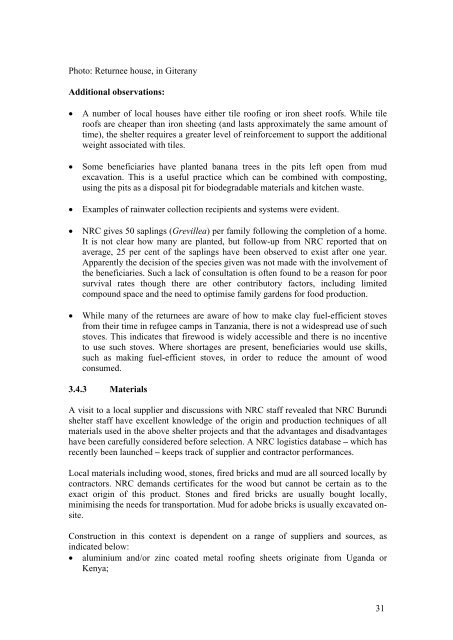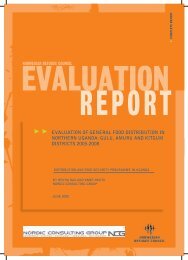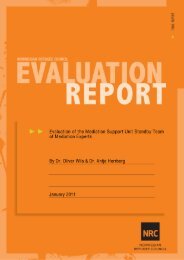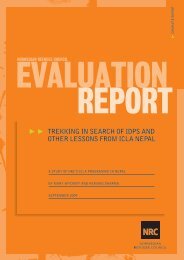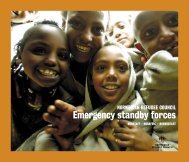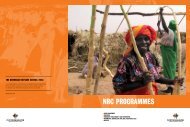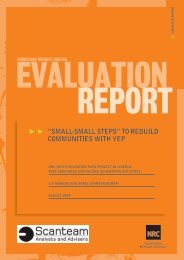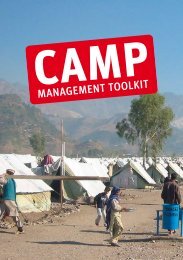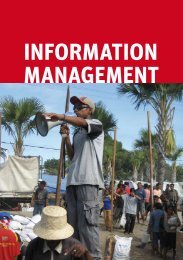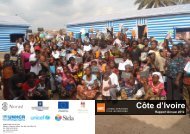Download full report - English version - ProAct Network
Download full report - English version - ProAct Network
Download full report - English version - ProAct Network
You also want an ePaper? Increase the reach of your titles
YUMPU automatically turns print PDFs into web optimized ePapers that Google loves.
Photo: Returnee house, in Giterany<br />
Additional observations:<br />
A number of local houses have either tile roofing or iron sheet roofs. While tile<br />
roofs are cheaper than iron sheeting (and lasts approximately the same amount of<br />
time), the shelter requires a greater level of reinforcement to support the additional<br />
weight associated with tiles.<br />
Some beneficiaries have planted banana trees in the pits left open from mud<br />
excavation. This is a useful practice which can be combined with composting,<br />
using the pits as a disposal pit for biodegradable materials and kitchen waste.<br />
Examples of rainwater collection recipients and systems were evident.<br />
NRC gives 50 saplings (Grevillea) per family following the completion of a home.<br />
It is not clear how many are planted, but follow-up from NRC <strong>report</strong>ed that on<br />
average, 25 per cent of the saplings have been observed to exist after one year.<br />
Apparently the decision of the species given was not made with the involvement of<br />
the beneficiaries. Such a lack of consultation is often found to be a reason for poor<br />
survival rates though there are other contributory factors, including limited<br />
compound space and the need to optimise family gardens for food production.<br />
While many of the returnees are aware of how to make clay fuel-efficient stoves<br />
from their time in refugee camps in Tanzania, there is not a widespread use of such<br />
stoves. This indicates that firewood is widely accessible and there is no incentive<br />
to use such stoves. Where shortages are present, beneficiaries would use skills,<br />
such as making fuel-efficient stoves, in order to reduce the amount of wood<br />
consumed.<br />
3.4.3 Materials<br />
A visit to a local supplier and discussions with NRC staff revealed that NRC Burundi<br />
shelter staff have excellent knowledge of the origin and production techniques of all<br />
materials used in the above shelter projects and that the advantages and disadvantages<br />
have been care<strong>full</strong>y considered before selection. A NRC logistics database which has<br />
recently been launched keeps track of supplier and contractor performances.<br />
Local materials including wood, stones, fired bricks and mud are all sourced locally by<br />
contractors. NRC demands certificates for the wood but cannot be certain as to the<br />
exact origin of this product. Stones and fired bricks are usually bought locally,<br />
minimising the needs for transportation. Mud for adobe bricks is usually excavated onsite.<br />
Construction in this context is dependent on a range of suppliers and sources, as<br />
indicated below:<br />
aluminium and/or zinc coated metal roofing sheets originate from Uganda or<br />
Kenya;<br />
31


